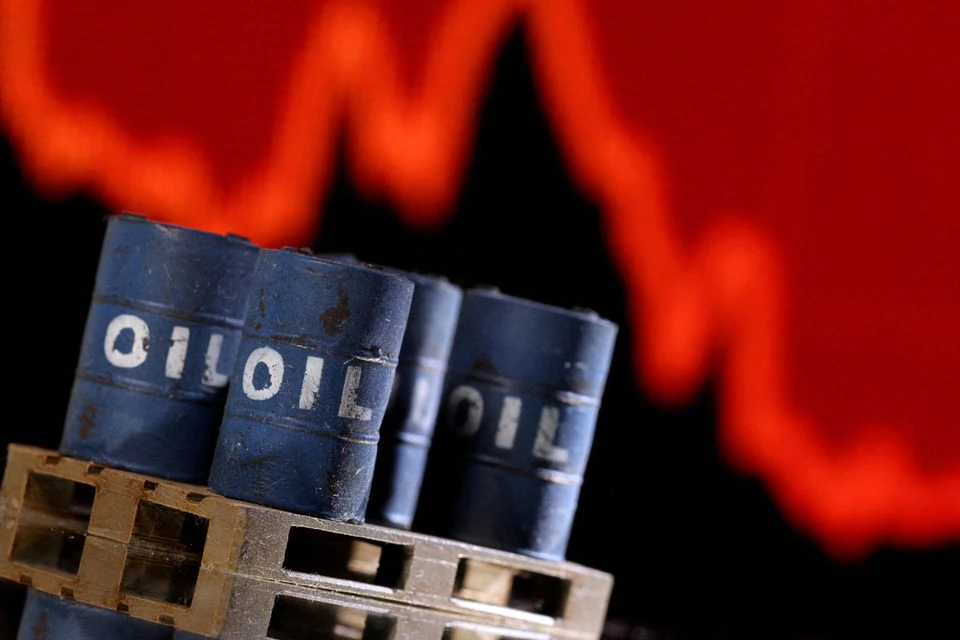LONDON, July 8 (Reuters) – When French President Emmanuel Macron whispered in Joe Biden’s ear last month that top global oil exporter Saudi Arabia has very little additional capacity to increase output, the U.S. President looked surprised.
Biden is due to land in Riyadh later this month, and he will likely hear the same sobering message – don’t count much on Saudi Arabia to help replace Russian oil.
How much Saudi Arabia – seen as the “central bank” of global oil – can really pump is an industry secret and scepticism on this usually grows at times of high oil prices and strained global production. The kingdom, which says it can pump 12 million barrels per day, has regularly proved its doubters wrong in the past.
But as the world faces one of its worst ever supply crises, industry insiders, OPEC sources and other experts are asking whether, with current output of at least 10.5 million bpd, Saudi Arabia really has another 1.5 million bpd up its sleeve that can be brought online quickly and sustained.
Adding to scepticism about spare capacity, Saudi Arabia has been pumping below its OPEC quota despite near-record oil prices, and OPEC figures show drilling of new wells in the kingdom last year remained well below pre-pandemic levels.
A senior industry source who recently sat down with the management of Saudi state oil company Aramco (2222.SE) aid he was told the company had at most a further 1 million bpd of spare capacity that was readily available.
“If push comes to shove then Aramco have 1 million bpd that they can get into the market relatively quickly, but that can’t be sustained for long,” the source said.
At the time of the meeting Aramco was producing 10.5 million bpd, meaning its output could not jump above 11.5 million bpd. The source declined to be identified by name given the sensitivity of the matter.
Another senior source, citing information from private conversations with Aramco insiders, said his intelligence showed Aramco could not pump more than 11 million bpd without drawing on stocks at home and abroad in consuming countries such as Japan, the Netherlands and Egypt.
Aramco doesn’t disclose the level of stocks but the industry estimates the firm could release an extra 0.3-0.5 million barrels per day for between 60 and 90 days.
Gary Ross, a veteran OPEC and Saudi observer, said Saudi production capacity might be no more than 11 million bpd because low drilling rates of the past years have failed to replace losses in existing capacity.
“We are running on empty!” Ross said.
ARAMCO WORKING ON GROWTH PLAN
Saudi Aramco, in a statement to Reuters, said the company maintains a crude oil maximum sustainable capacity (MSC) of 12 million bpd and had pumped this much two years ago.
“It is worth noting that, in Q2 2020, we set a daily production record of 12.1 million bpd,” the company said.
Back in 2020, such pumping rates were sustained for just a few days and oil traders said they saw large stocks withdrawals by Aramco.
“We also continue to execute our growth plans to promote the long-term productivity of Saudi Arabia’s reservoirs and, in line with the Kingdom’s directive, we are proceeding with our plans to increase the company’s crude oil MSC from 12 million bpd to 13 million bpd by 2027.”
OPEC watchers also noticed that with Saudi Arabia unwinding output cuts agreed in the worst of the pandemic, a gap has opened up between what Saudi Arabia says it is producing and what outsiders assess its production to be.
In May, the secondary sources that OPEC used to track its output put Saudi production at 10.42 million bpd, over 100,000 bpd below its quota and what the kingdom said it produced.

The secondary sources, which include consulting firms and specialist oil news reporting and pricing agencies, are chosen by OPEC to monitor its output, a legacy of old disputes over how much oil members are really pumping.
If maximum capacity is nearing, then Saudi Arabia is limited in its ability to offer Biden any immediate increase in production, even if that suited Riyadh’s purpose to do so. Biden’s Middle East tour is scheduled for July 13-16.
Macron said he’d been told by the UAE’s president that Saudi Arabia could increase output by 150,000 bpd or maybe a little bit more, and they did not have “huge capacities” until six months’ time.
OPEC production capacity in general has been thinned by a number of factors, including periods of low oil prices amid a global surplus in 2014-2016 and a drop in drilling rates due to the COVID pandemic in 2020.
“The oil industry of OPEC members has faced a lack of investment due to declining oil revenue,” said an OPEC delegate. “A fall in world oil prices always affects investment levels in the upstream, with a time lag.”
An OPEC document released in June, the Annual Statistical Review, showed that Saudi activity around some key upstream metrics posted only a partial rebound from the pandemic or declined further in 2021.
The number of completed wells – the process of making a well ready to produce – in Saudi Arabia declined by 152 in 2021 to 314. This was the lowest since at least 2017, and the year-on-year decline was almost half of the total drop in OPEC.
The number of active rigs in Saudi Arabia rose by six to 65 in 2021, although the total remained well short of the 117 active rigs on average seen in 2017-2019.
“In 2021, OPEC well completions were less than half their 2014 peak. The group is losing circa 1 million bpd of capacity per year to declines,” said Virendra Chauhan from Energy Aspects think-tank. “The Gulf producers were not immune to declines either with even Saudi Arabian completion falli






